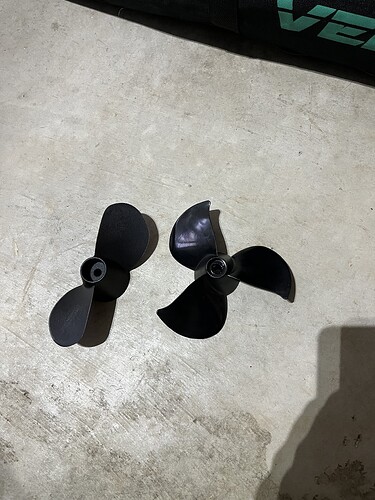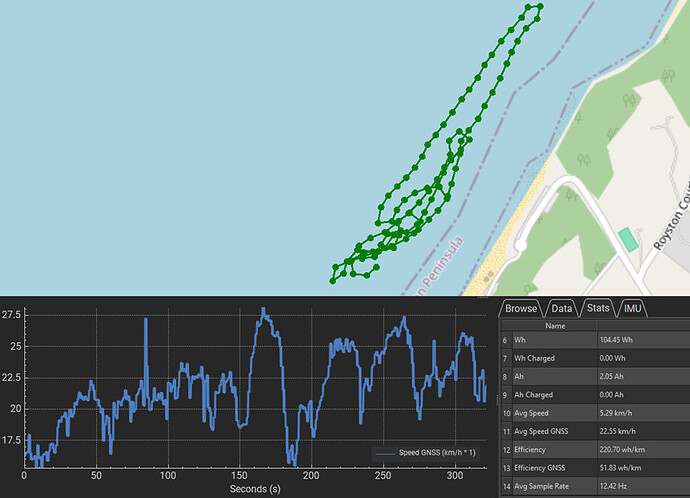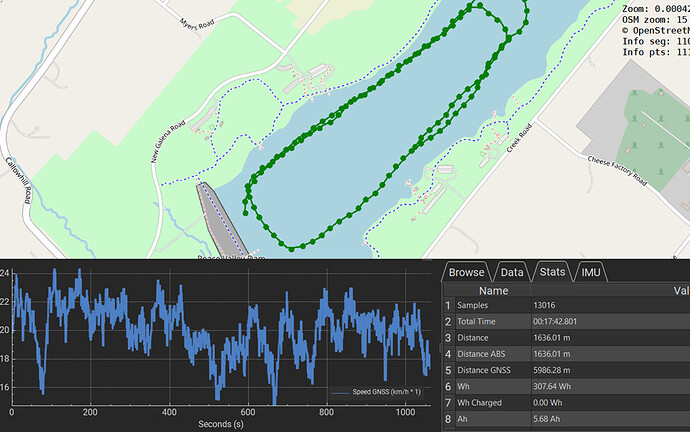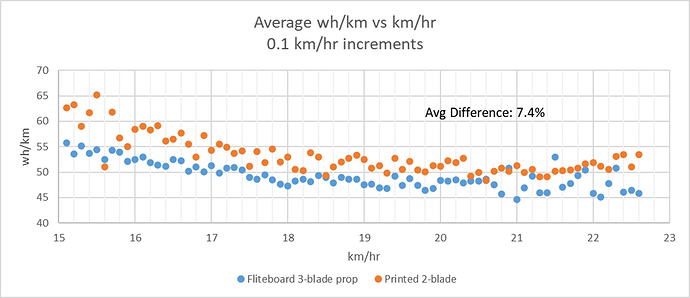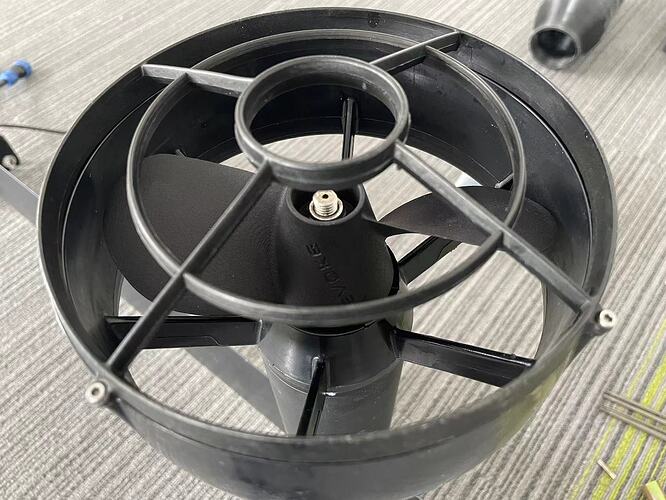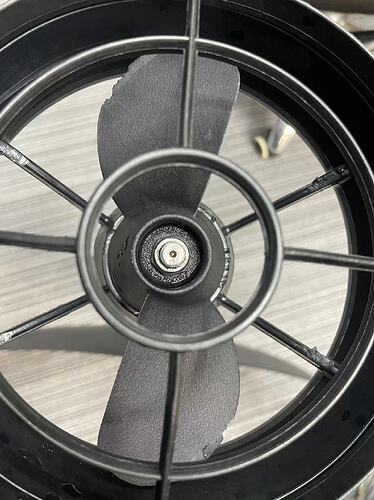I also want to try this propeller, but I can’t download it from the website. Who can send this file to my email? Thank you! qzyf006@gmail.com
No I didn’t sand or buff it at all, I find that the texture varies every time they print, mine came out fairly smooth off the bat.
I will have this info out in the next few days, my foil has been in for repairs for the past few weeks and I haven’t had a chance to get out on the water in a while. Have a few nice days ahead so ill be sure to get some more testing done!
Well I have the two blade prop from @kevintran mounted on my Flipsky 65161 motor and will give it a trynext time I head out (hopefully in a few days).
I did need to make some slight modification to make it fit. The thread on the Flipsky motor shaft was a bit too large so I had to drill out the prop a bit. I also found the shaft pin I put on on my flipsky motor was too large for the slot on the prop, so had to enlarge that as well.
Not sure I am the most qualified for prop testing as I am still learning to handle my eFoil. Will just have to see much of a difference I can feel and describe. I will log data with Vesc Tool and then I can process it a bit to come up with wh/km values, this seems to be the overall system efficiency metric that is used on the forum. I’ve already done this with my Fliteboard prop with a plot of wh/km vs kph, so there’s something to compare with.
Nice will be cool to see your data. I suggest for good data ride on your knees and consistent speed of 25kmh or so. that will take out the bobble of sketchy riding . you onlt need a few km to see whats up. I plan to to do this on my new big wing tomorrow.
Here is a log of a quick ride I had with the prop. My motor is a 120kv flipsky running 13s. My foil is very light at 25kgs AUW with a 1300cm2 wing so its on the slower side with a top speed of 35kph, here is a link to the build : My latest build from Melbourne Australia
Looks like you just shared a raw VESC log? It requires some processing to get usable looking data (or I guess the VESC tool viewer, or https://vetr.at).
I took your 2-blade prop out last Friday and I liked it! I’m still organizing the data a bit and will post sometime soon. I’ll give this file a similar treatment and share efficiency results with mine. Unfortunately last Friday was very windy on the lake and the data I have for the Fliteboard prop was perfectly calm
Yes my apologies for being lazy and just uploading the raw files.
Glad you liked the prop! What do you think about the noise? I find it fairly quiet
Yes, it is quiet @kevintran! I did appreciate it, especially when going down wind. I didn’t think the Fliteboard prop was causing much noise to begin with. I guess the loading on the motor is just a bit different and it produces less noise.
Still working on a post of my rides (and now yours too)
A few days ago I got out to the lake with the 2 blade prop that @kevintran has kindly shared. I had it 3D printed in MJF by PCBway. I logged some data with my iphone using the VESC app and have included some summaries below. My main point of comparison for the 2-blade prop is a Fliteboard 3-blade prop I’ve been using so far. I also included some results from the file @kevintran posted above.
My Setup: 14S ~1kwh battery, Flipsky 65161 120KV, Gong Curve LT 1450cm2 wing, 43cm stab, 100L Fliteboard, me@63kg dry.
The 2-blade prop is quieter than the Fliteboard. It also takes a bit more throttle input to get started and to make adjustments. I use a VX3 on the M throttle setting. Once I got used to this I found it a bit easier to handle than the Fliteboard prop which is more sensitive and requires a gentle finger.
For the VESC snapshots I trimmed to select a period on foil and just relied on the VESC tool’s Stats tab of the selected period. In my windy lake run I did my best to select equal upwind/downwind portions to minimize bias. Sorry my runs are so slow, I’m still building my confidence for sustaining higher speeds.
Kevin and I have very similar efficiency numbers, probably within margin of error. My Fliteboard prop is also so close it can’t be called a meaningful efficiency difference.
Kevin’s Run: Ocean (conditions?), 5:24, 0.47km, Avg Speed 22.6 km/h, Avg Effic 51.83 wh/km
Silas’ Run, 2-blade: Windy Lake, 17:42, 1.6km, Avg Speed 20.3 km/h, Avg Effic 51.39 wh/km
Silas’ Run, Fliteboard prop: No wind lake, 12:03, 1.04km, Avg Speed 18.17 km/h, Avg Effic 51.18 wh/km
I also attempted a more complete analysis of my data files. I determined average efficiency from 15 – 22.6 km/hr in 0.1km/hr increments using most of the data in both files. In this plot the Fliteboard prop appears consistently better. However I think the wind bias on the 2-blade data makes this a poor comparison. I may repeat this later if I get a nice calm day again.
Interesting comparison. Thanks
You might find your rig easier to ride if you increased speed to 25kmh. I find the foil sort of locks in and is a lot more predictable. However any speed over 30kmh starts to “leave a mark” when you wipe out😀
Thanks for sharing. Have you tried the maximum speeds of the two propellers? Is the pitch of the fliteboard propeller also 7 inches?
Today, the new 3D printed nylon two-blade propeller was tested, and the overall feeling was relatively stable, but the power was a little weaker than the three-blade propeller used before. The pitch of both propellers is 7 inches. I wonder if it would be better to use a 9-inch pitch. The propeller broke a little after one use, and the 3D printing was still not strong enough.
Interesting, that looks like an MJF print just like my copy, so it should have been pretty tough. Did it contact the duct housing? It chipped both blades.
How did you find the noise level? For me it seemed like a trade off losing some power and responsiveness for peace and quiet.
Anyone interested in max efficiency? I’ve wondered what max efficiency would look like, though it would require an assist to get on foil Foil pumping using low power efoil - #9 by mterea
Hello guys!
@JvdZ I am really interested by the design of your 143mm diameter propeller! Can you change easily the pitch (max 152.4mm / 6inches) and pin (diameter on the photo below is 4,1) ? I would like to fit your propeller on my motor (Maytech MTI85165)

Thanks!
@Flo98 I don’t have the software anymore to modify the original files. The pitch of the blades is locked in the design, not a variable.
The prop might be a bit to small for a big motor unless you are running high RPM. I currently flying with a flying rodeo prop or fliteboard prop. The fliteboard prop is about 50eur, very good prop but you need to enlarge the bore to 12mm.
@JvdZ The motor is 200Kv, that’s why i am trying to find a low pitch propeller because i draw too much current and thus my VESC overheats. The propeller i have is apparently an (old) fliteboard one. What pitch is yours? Trying to find or 3d print a propeller with 143mm diameter and low pitch (under 6 inches)
The diameter of the propeller can currently not exceed 143mm otherwise the blade would hit the fuselage, but i could design a 3d part between the mast and fuselage to lower it. But larger propeller means more drag and thus higher current?
What was the software you used to modifiy the original files?
Aha, I understand the low torque application. Files came from a very early version of SolidWorks, 2011 I think. Modelled the ugly way with splines/crossections to form the blade geometry… So no parametric pitch adjustments.
@Flo98 You can ask @superlefax = (https://propellerking.com) if he has a 3-4” pitch prop to offer. I think his props are 3d-printed so might be possible to get something even though it’s not on the site, if there is a design already tested.

